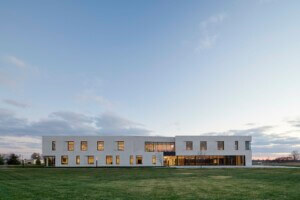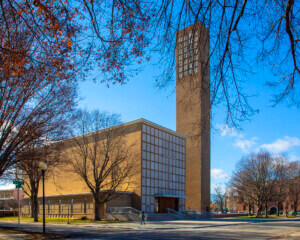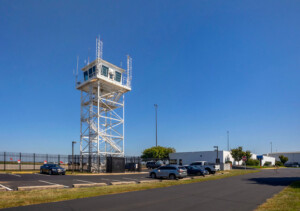Exhibit Columbus: New Middles – From Main Street to Megalopolis, What is the Future of the Middle City?
Columbus, Indiana
Open through November 28, 2021
On the four-hour drive from Chicago to Columbus, Indiana, romance and romanticization were squarely on my mind. I had heard about the Columbus mythos, in which corporate generosity made the place into a modernist mecca of the Midwest. For an architect of Eero Saarinen’s standing, or his protégé Kevin Roche, Columbus presented itself as an incubator for experimentation. I tried not to buy into the fanfare; I put up my guard, because to romanticize a place is to ignore its adversities, its faults, its muddied histories. I was traveling to the south Indiana town for the opening of Exhibit Columbus, the biennial architecture and design festival hosted in and among nice, modern buildings by Saarinen, Roche, and I. M. Pei, and had a suspicion that the event would function as window dressing for these same nice, modern buildings. What was on display instead were public spaces and an eagerness to reveal, uncover, and remix public histories.
For curators Mimi Zeiger and Iker Gil, Columbus presented itself as an incubator for thinking—namely, about the future of “middle” places. As I previously wrote in AN, the pair’s definition of the middle is intentionally evocative, a frame through which to view not just the Midwest but the entire Mississippi River watershed and beyond. The works of photography fellows Virginia Hanusik and David Schalliol, whose photos address Louisiana’s water management infrastructure and industrial food production around the Great Lakes, respectively, make this resonance explicit. Less direct are the 15 displays and installations by architects, photographers, and local high school students Zeiger and Gil have assembled at site-specific outdoor locations around downtown Columbus.
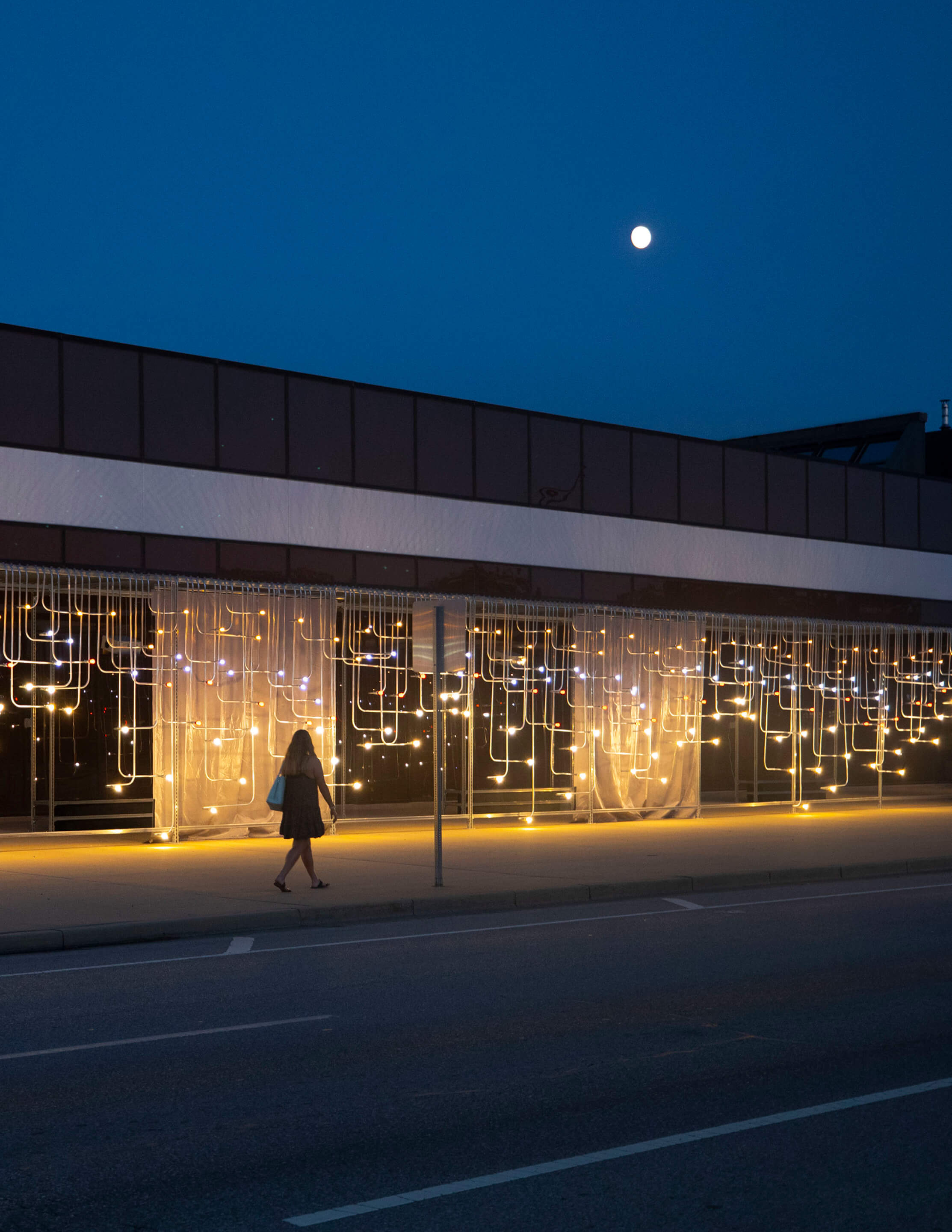
Some exhibitors opted to examine the middle’s future by looking backward or getting down to basics. The Minneapolis design practice Dream the Combine even investigated the town’s name. Partners Jennifer Newsom and Tom Carruthers installed 58 flagless flagpoles in Mill Race Park (Michael Van Valkenburgh Associates, 1993), all representative of places called “Columbus”—hence the piece’s title, Columbia, Colombo, Colòn. The poles are inscribed with texts that pertain to the ways that colonization—arguably Columbus’s greatest legacy—manifests as laws, events, and communiqués, including stories of lynchings in Columbus, Texas, and laws surrounding landownership in British Columbia. At close range, these texts spiral around the poles, forcing the reader to spin until dizzy. From afar, the cluster of poles brings to mind Walter De Maria’s The Lightning Field, another sparse installation comprising steel rods whose purpose is to direct powerful, energy-charged strikes at the earth.
Olalekan Jeyifous also turned his attention to history, mining the archives of Columbus’s Cleo Rogers Memorial Library (I. M. Pei, 1969) for artifacts and ephemera from its 1970 exhibition of African American art. From this material Jeyifous, a visual artist based in Brooklyn, New York, developed a series of colorful hybrid structures he installed in the library plaza out front. Formed using wood risers and painted sculptural elements, each structure is also outfitted with augmented reality codes that, when scanned with a phone, reveal the source material.
Working through histories, these public installations don’t speak to the past as much as they reveal hidden, buried, or assumed ideologies. Dream the Combine recognizes that Columbus, as a toponym, is so prevalent in our understanding of geography that we forget the horrific legacy of colonization it should connote; Jeyifous, on the other hand, gives a significant yet archived exhibition new life and relevance to a tech-savvy generation. Through revealing and appearing, these concepts have the potential to push Columbus residents to reconsider their civic identity as both observers and participants. Middles here aren’t made new; we are.
As an exhibition of public spaces, many of the installations call attention to these spaces’ overlooked features and users. Elsewhere in Mill Race Park, Joyce Hwang’s totemic To Middle Species, with Love constructs habitats for little-seen nonhuman visitors. Bat houses crown the wooden pillars, whose stone gabion base invites toads and small lizards. Anthropocenic visitors can sit on the stacked rocks or gaze at the sky at dusk while bats congregate overhead. Continuing the nocturnal theme, Future Firm’s Midnight Palace—a three-dimensional mural of snaking electrical conduits and LED bulbs—improvises an outdoor movie-screening space for graveyard shift workers. Situated on a wide stretch of sidewalk along the Cummins Sears Building (Gruen Associates, 1971) and Brown Street, the piece hopes to make visible an often-invisible labor force in a city where almost 40 percent of workers are employed in manufacturing. Whether the installation will be used by this set is questionable, but watching speeding cars slow down on the busy road to gawk at the twinkling lights hints at whom else the installation may make visible.
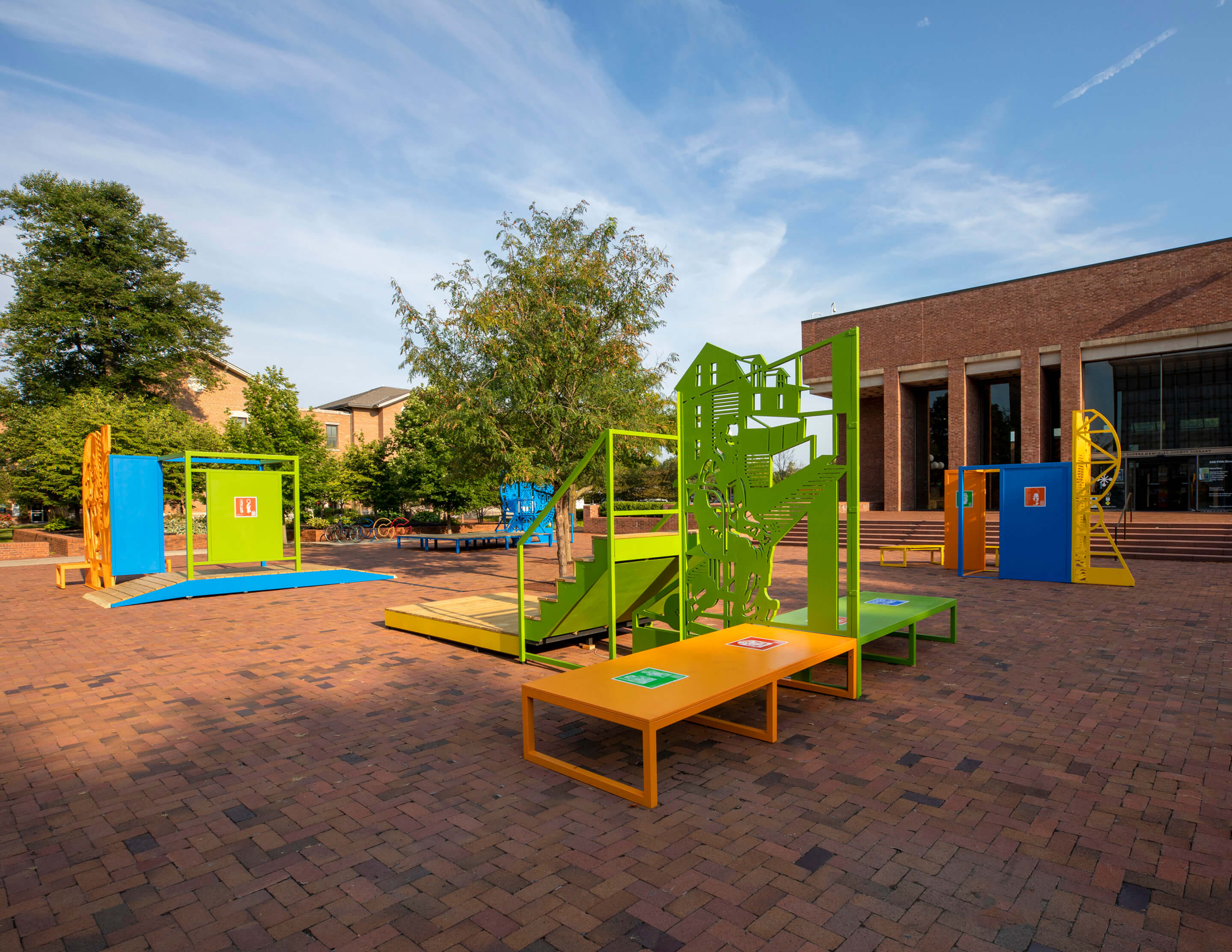
The most engaging projects were not just placed in public but created new types of places for the public. Less successful works, while thematically compelling, failed to capitalize on public space. Take Ersela Kripa and Stephen Mueller’s Spectral, a loose assemblage comprising infrared-obscuring materials that block surveillance technologies. Building on research the pair is conducting at Texas Tech University, the piece foregrounds the heavy-handed actions of police, including closely surveilling and menacing street protesters. But installed in the parking lot of the now-defunct Crump Theatre (facade by Alden Merenda, 1941), it is reduced to a curio.
The festival’s most effective work also comes with the lightest touch. Mason White and Lola Sheppard, the twosome behind the Toronto-based Lateral Office, required very little to make the most of an empty, grassy lot on Washington Street. This Appearance Is_ consists of lenticular plastic sheets—not unlike the Lisa Frank holographic notebook covers popular in the 1990s—fitted within twisting, bending orange metal frames. The plastic sheets act as a camouflage tool: Standing close behind the plastic, onlookers can see the outline of a person standing on the other side, but take a few steps back and that person appears to vanish into a blur. If I had to construe a greater message from this game of peekaboo, it would be that the middle also mediates.
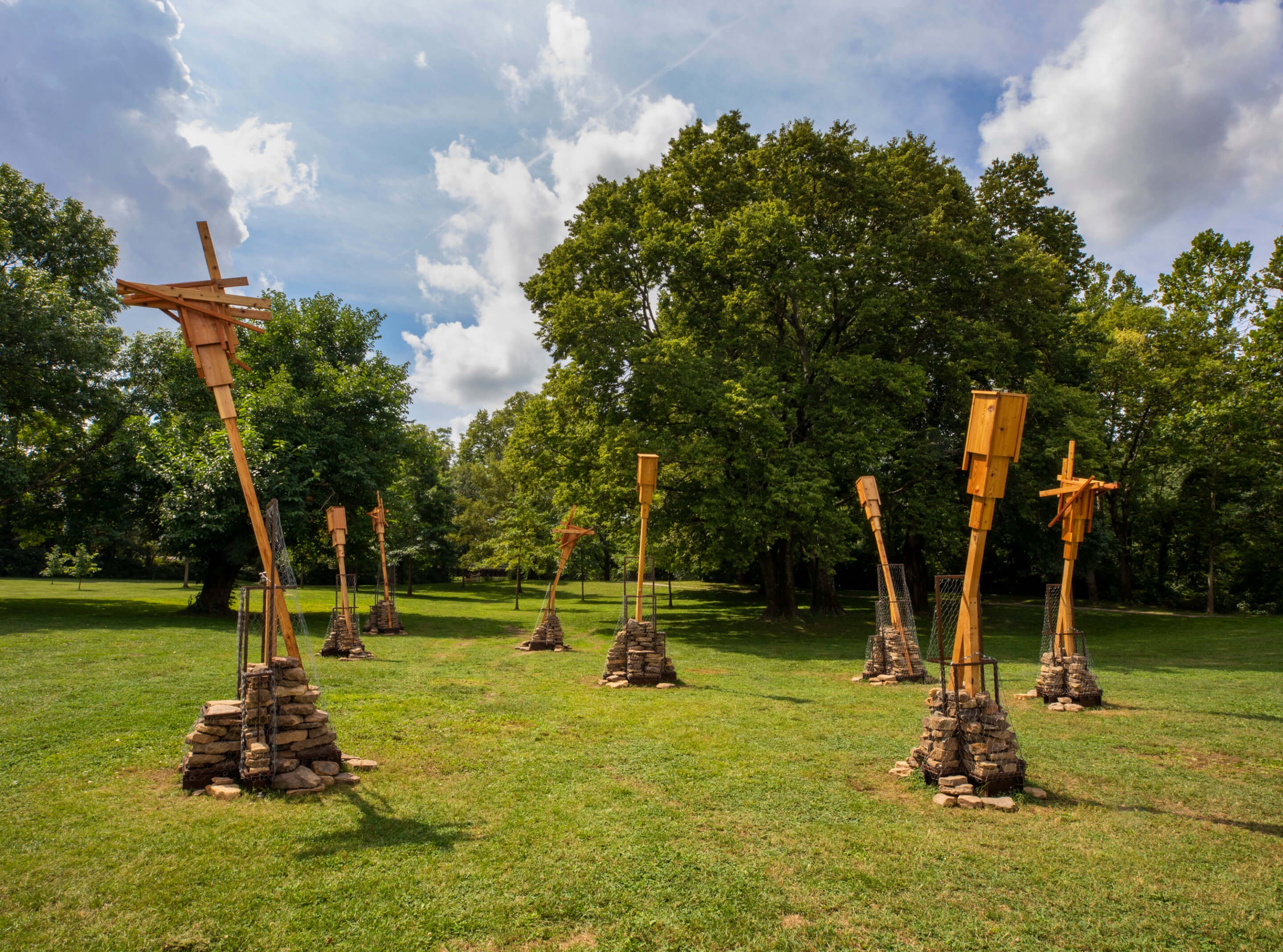
Though lacking nuance, the project captures a particular way of thinking about hiding and appearing in public spaces. I joked with other attendees that the installation might provide opportunities for public make-outs or other types of rendezvous that require a little discretion. A certain type of magic takes place in public, and to pay special attention to public spaces is, as Hannah Arendt wrote, to create places of political negotiation and conversation and where one’s unique identity is formed.
To spotlight Columbus’s historic buildings, as I’ve tried to avoid here, would be to romanticize this unique place; to bring to light buried histories or unseen populations in an artful public space is, contrarily, an act of romance. As in romance, in public spaces we negotiate with others; we are invited to navigate our beliefs and desires to discover precisely who we are and how we want to be appreciated, touched, argued with, and celebrated. We romanticize, maybe, by allowing our “architectural gems” to wink at us while we take a photo and say, “They don’t build ’em like they used to!” At Exhibit Columbus, the buildings step aside; they are not romanticized. Creating a visionary future for middle places necessitates critical hindsight and attention to what has been made invisible—people, ecologies, ideas—making way for self-discovery, place-knowing, and formation of civic identities.
Anjulie Rao is a Chicago-based editor and journalist.








